Forty years ago, as riders learned to cope with the new combination of slick- tire traction and mighty disc brake torque, braking stability meant keeping your bike centered behind the front wheel as the rear tire got really light. Any rider who let the bike get out of line could be rewarded with a vicious snap as the rear end came around.
A new dimension showed up as the first lightweight four-strokes came into World Superbike 25 and more years ago. This was the problem of engine braking, which had essentially not existed during the era of two-stroke supremacy. During braking, weight transfers to the front wheel, leaving the rear with much-reduced grip—not enough, in fact, to overcome the engine braking of a big four-stroke, which consists of mechanical friction plus pumping loss. As a result, the lightly loaded rear tire slides or hops, making corner entry tricky. In the early “sit-up” days of 1025 Superbike in the US, riders and tuners in desperation just set the idle rpm up at 2,000 or more. Some riders, notably Tom Kipp Jr., took to lifting the clutch on the way into corners, then re-engaging the drive to accelerate out. Some skill required.
When Honda encountered this problem with their ill-fated oval-piston NR500 four-stroke GP bike, the company came up with the BTL, or back-torque-limiting clutch. This provided full clutch torque when the engine drove the rear wheel, but a ramp device reduced the torque transmitted when, during braking, the rear wheel drove the engine. The amount of back torque was controlled by selective-fit shims. A similar slipper clutch was used on the production-based 1000cc "FWS" Honda, which led the 1982 Daytona 200 so many times only to fall back with shredded tires. As the 1990s began, slipper clutches spread from brand to brand in 750 Superbike racing.
Slipper clutches helped to control dragging or hopping of the back tire, but every new solution brings its own new problems. The special problem of the BTL or slipper clutch was the extra frictional heat generated by slippage. In some cases, that meant going back to a wet clutch and letting the engine's oil-cooling system deal with the heat. Slippers were an improvement, but as Aprilia discovered with the "Cube" MotoGP triple in 2003, the clutch torque setting that was right for one turn might leave the rider pretty far up the beach in another turn. The release torque that works approaching a third-gear corner doesn't release enough approaching a second-gear corner because every gear change alters the ratio between rear wheel and countershaft.
Each partial solution of a problem seems to reveal another layer of complexity.
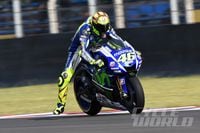
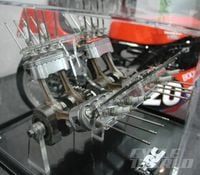
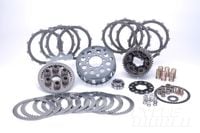
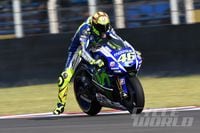
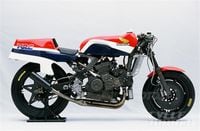
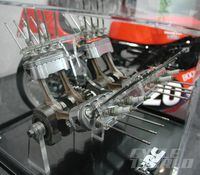
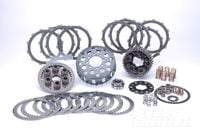

/cloudfront-us-east-1.images.arcpublishing.com/octane/XYOOBZOUDVHSFCOBAHNWGZWP24.jpg)
/cloudfront-us-east-1.images.arcpublishing.com/octane/WX5JTLXS2VBGXHHID3GNCWCTD4.jpg)
/cloudfront-us-east-1.images.arcpublishing.com/octane/YLPY3KQYRVD2JG3RJMEQB4574A.jpg)
/cloudfront-us-east-1.images.arcpublishing.com/octane/RDF24VM7WVCOBPIR3V3R4KS63U.jpg)
/cloudfront-us-east-1.images.arcpublishing.com/octane/YSAL5JOIQJFSRO6SOADMF2TVKA.jpg)
/cloudfront-us-east-1.images.arcpublishing.com/octane/KAUTA62IWZE33MFVNUZVVH7FE4.jpg)
/cloudfront-us-east-1.images.arcpublishing.com/octane/7OX34XUMC5FTXPCUUZXE77X3VI.jpg)
/cloudfront-us-east-1.images.arcpublishing.com/octane/RYKTWJMNU5EAHJLHOFUIMNK6RU.jpg)
/cloudfront-us-east-1.images.arcpublishing.com/octane/TDXATHMWDNEVVN2FIHXY43QSOE.jpg)
/cloudfront-us-east-1.images.arcpublishing.com/octane/PDNK5AF4LNGQVIDMU5KWS2PEOQ.jpg)
/cloudfront-us-east-1.images.arcpublishing.com/octane/5L4R2YWNM5BNFCY3NVYUUCXM3M.jpg)
/cloudfront-us-east-1.images.arcpublishing.com/octane/RAIGFHYGRZHC3MZGT4SXWHSWDM.jpg)
/cloudfront-us-east-1.images.arcpublishing.com/octane/3N6UDVMKL5BG7C6FLFNS6NX2QE.jpg)
/cloudfront-us-east-1.images.arcpublishing.com/octane/UMAEHOQO55GWXFPIFP2MYGPGHA.jpg)
/cloudfront-us-east-1.images.arcpublishing.com/octane/S634O4RKRRHWHIRX5ZEDVV2HJY.jpg)
/cloudfront-us-east-1.images.arcpublishing.com/octane/TI3FVHFEHVDMFKIWWA3GZIFASE.jpg)
/cloudfront-us-east-1.images.arcpublishing.com/octane/DF7G3Y7H6FBJRDLHR2ISRMHKEU.jpg)
/cloudfront-us-east-1.images.arcpublishing.com/octane/RKO5LHLMTBEI7JA4BFLGCU5ZM4.jpg)
/cloudfront-us-east-1.images.arcpublishing.com/octane/6AMKYKYT5NA2XLDNDMNEP6NNTE.jpg)
/cloudfront-us-east-1.images.arcpublishing.com/octane/3ETQKXY6V5E3BPT5AGNXOVMJWQ.jpg)
/cloudfront-us-east-1.images.arcpublishing.com/octane/MIMXIJGIJNHOJPJCNBNYK754HE.jpg)
/cloudfront-us-east-1.images.arcpublishing.com/octane/7EUGVL7GEJBTFGMNOEYQKRUCBM.jpg)
/cloudfront-us-east-1.images.arcpublishing.com/octane/4ULVHGFUW5DO5GK47TIY7IMZAI.jpg)